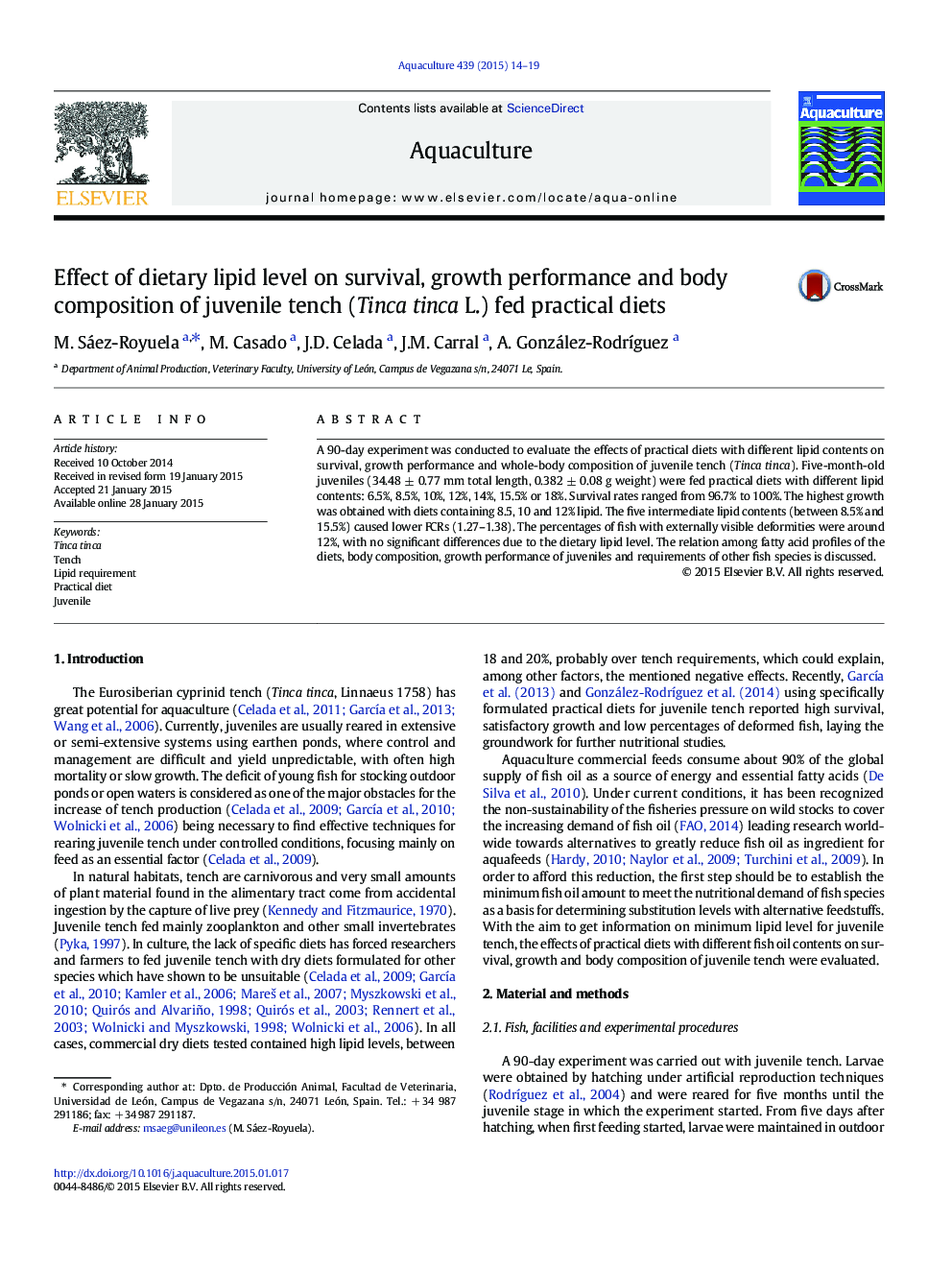| Article ID | Journal | Published Year | Pages | File Type |
|---|---|---|---|---|
| 2421739 | Aquaculture | 2015 | 6 Pages |
•Useful information for the development of a practical diet for tench culture is provided.•A minimum suitable lipid content in the diet for juvenile tench has been determined.•Relation among fatty acid profiles of the diets, body composition and growth performance of juvenile tench are provided.
A 90-day experiment was conducted to evaluate the effects of practical diets with different lipid contents on survival, growth performance and whole-body composition of juvenile tench (Tinca tinca). Five-month-old juveniles (34.48 ± 0.77 mm total length, 0.382 ± 0.08 g weight) were fed practical diets with different lipid contents: 6.5%, 8.5%, 10%, 12%, 14%, 15.5% or 18%. Survival rates ranged from 96.7% to 100%. The highest growth was obtained with diets containing 8.5, 10 and 12% lipid. The five intermediate lipid contents (between 8.5% and 15.5%) caused lower FCRs (1.27–1.38). The percentages of fish with externally visible deformities were around 12%, with no significant differences due to the dietary lipid level. The relation among fatty acid profiles of the diets, body composition, growth performance of juveniles and requirements of other fish species is discussed.
